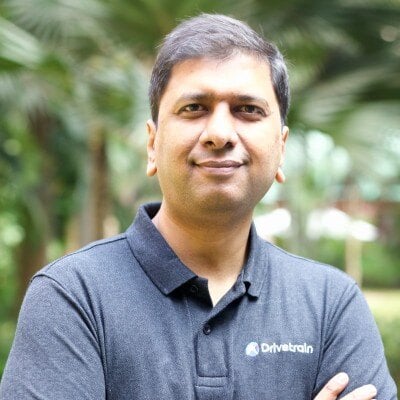September 30, 2025
 by Thom James Carter / September 30, 2025
by Thom James Carter / September 30, 2025

We are constantly engaged in processes.
That cup of joe you made this morning before diving into your daily tasks? A process.
The onboarding of your latest client? A process.
The budget planning for this quarter? You guessed it; that’s a process, too.
A team’s set of processes dictates what they do, why they do it, and how. To put it simply, processes are the backbone of any team. But are your daily processes optimized? Are they meaningfully reviewed regularly, and is success being measured?
If the answer is no, you need process optimization.
Process optimization is a systematic approach to analyzing and refining business processes to improve efficiency, effectiveness, and adaptability. Organizations can reduce costs, increase productivity, and deliver higher-quality products or services by optimizing existing workflows, identifying bottlenecks, and implementing targeted improvements. This continuous improvement cycle enhances operations, enabling businesses to adapt to market changes and meet customer demands.
The good news is that it's not a manual process. Tools like business process management software can define and automate this optimization process for you. You can get an overview of your company and narrow it down to departments needing the most support.
TL;DR: The best way to optimize your business processes is to examine them from end to end, identify inefficiencies, and apply proven techniques such as Six Sigma, Lean, or BPM for systematic improvement.
The Oxford English Dictionary (OED) defines a process as “a series of actions or steps taken to achieve a particular end.”
Going back to the earlier example of making coffee, that process started with you either grabbing a mug out of the cupboard or preparing the boiling water. By the end of it, you could enjoy a cup of coffee and start the day off on the right foot. It was a collection of tasks you needed to carry out to get what you wanted (or, depending on your caffeine compulsion, needed).
There are countless ways to adjust any given process so that it’s objectively better, from eliminating certain tasks to adding new ones, rewriting a particular step in the process, or reordering the process’s order of tasks to improve the overall flow. Either way, process optimization aims to make business operations more efficient, more effective, and less complicated, time-consuming, and wasteful.
There are several different methodologies and tools used for process optimization, each with its own strengths and applications. Here are some of the most common types:
Six Sigma and Lean are two of the most widely adopted process optimization frameworks. Six Sigma focuses on minimizing defects and process variation through rigorous statistical analysis and the DMAIC cycle (define, measure, analyze, improve, control).
For example, a manufacturing firm might apply Six Sigma to reduce product defects from 5% to below 1%, using root cause analysis and process control charts. Lean, originally developed in the automotive sector, targets waste elimination and maximizes value by streamlining workflows. In a software development context, Lean involves mapping the value stream to identify bottlenecks, eliminating unnecessary steps, and implementing just-in-time delivery.
Practically, both methods benefit from cross-functional team workshops, detailed documentation of workflows, and regular review cycles to ensure sustained gains. Implementing Six Sigma or Lean often requires upfront investment in training and tools, but the long-term ROI can be substantial, especially for organizations with high-volume, repeatable processes.
Total quality management (TQM) is a customer-centric approach to process optimization that focuses on continuous improvement throughout all areas of a business. It involves all employees in the process improvement effort and emphasizes meeting customer needs and expectations.
Business process management (BPM) takes a holistic view of process optimization, providing a framework for identifying, modeling, analyzing, and improving business processes across the entire organization. BPM platforms let you visually map workflows, set up automation rules, and monitor performance metrics in real-time.
For example, a financial services firm might use BPM software to automate client onboarding, integrating compliance checks and document management into a single streamlined workflow. BPM is particularly valuable for organizations with complex, multi-departmental processes or regulatory requirements.
To implement BPM successfully, start by mapping your core processes, involving stakeholders from across the business, and use software tools that support version control and data-driven monitoring. Regularly review your process models to adapt to changing business needs or compliance standards.
Continuous improvement (often referred to as Kaizen) is a philosophy that encourages organizations to make small, incremental enhancements to processes on an ongoing basis. This approach is essential in fast-moving industries where rapid adaptation is key. For instance, a SaaS company might hold monthly retrospectives where team members suggest ways to streamline customer support ticket resolution. Over time, these small changes — such as adjusting ticket routing rules or updating knowledge base articles — can compound into significant efficiency gains.
Process mapping is visually helpful for documenting and analyzing processes. It involves creating a flowchart or diagram that shows all the steps involved in a process, as well as the decision points and handoffs. Process mapping tools can help identify bottlenecks, redundancies, and opportunities for improvement.
Process mining tools support both BPM and continuous improvement efforts. By creating visual diagrams of processes (using tools such as flowcharts or BPM software), teams can quickly identify redundancies, bottlenecks, and opportunities for automation. For example, HR teams often use process mapping to optimize hiring workflows, ensuring that candidate evaluation, background checks, and onboarding steps are clearly defined and efficiently executed.
To get started, select a process to map, involve the people who work with it daily, and use the visual map to guide improvement conversations. Incorporate feedback loops to ensure that process documentation remains current and actionable as your business evolves.
Choosing and implementing the right process optimization method depends on your organization's size, industry, and goals. Many leading businesses combine elements from multiple frameworks — such as using Lean principles within a BPM platform or applying Kaizen to supplement Six Sigma initiatives — to create a tailored, effective approach. Regardless of the path you choose, prioritizing documentation, measurement, and team collaboration will lay a strong foundation for process excellence.

I’m about to explain the DMAIC method in the following 6 steps so you can optimize your processes properly.
For DMAIC to work — and for any process optimization method, strategy, or process to work — you’ll need to have documented your processes first.
Business processes can be documented with widely-known programs such as Google Docs or even Microsoft Excel, but considering the plethora of software out there, such as BPM software, that makes documenting, using, optimizing, and managing your processes a breeze, opting for a purpose-built tool is worth your while.
But what’s most important here is getting your processes down, detailed, and documented. After all, you can’t actually optimize your processes if you can’t physically see how they work, what’s involved, and what the current iteration of each process is.
Not only is documenting your processes integral for DMAIC and process improvement but there are a ton of added everyday pluses that come from doing so.
For instance, think back to earlier when I discussed how optimized processes can make onboarding, in particular, faster and better. When the onboarded hire starts undertaking the same work-related processes and tasks as their colleagues, they’ll get to grips with everything if there are documented processes to follow and the instructions for what do simply haven’t been passed down by worth-of-mouth.
Similarly, let’s say a different employee can’t remember a certain step of a process. Instead of asking their manager what to do (and thereby distracting the manager from whatever they’re working on), the uncertain employee can refer back to the documented process. It’ll refresh their memory, reduce any anxiety they may have had, and prompt them to do what needs to be done!
Needless to say, documented processes aren’t just downright useful — they’re necessary.
Once business processes have been sufficiently documented, it’s time to start DMAIC itself and define which process you’ll optimize first.
In the beginning, it may seem a little overwhelming – especially considering there are potentially tens, hundreds, or perhaps even thousands of processes to optimize. That’s why it’s best to create a list of key processes to optimize and then work your way down the list.
To figure out this list, ask yourself:
Do keep in mind that, to avoid overload and scrambling your brain, you’ll want to optimize your processes one by one. Otherwise, keeping on top of multiple processes could prove difficult and could cause you to make mistakes and do further damage to your business processes.
Once you’ve created your list, the process at the very top — be it onboarding clients or creating a project management plan — is the one you’ll be optimizing first, so define it: Write down the name of the process, its goal, how it starts and ends, who it involves, and what it involves. Provide yourself and others you’re working with with the process’s basic but critical information.
Data is at the heart of DMAIC, so it’s only right that you measure how the process is faring early on. This provides a benchmark for how the process is working before any changes are implemented. Thankfully, measuring a process is not as hard as it sounds.
First, you’ll need to gather quantitative data. This can easily be done by measuring the process against its KPIs (you should already have 2-3 KPIs per objective). If you don’t have any key performance indicators for this, however, think about the expected outputs of the process in question: is the process achieving those outputs as intended? Is it doing so in an appropriate time frame? Is it failing to meet expected outputs at all? Basically, this is the point where you’ll want to consider the process in a critical way, backed up with quantifiable data.
Then, it’s time for qualitative data. Gathering qualitative data is far less daunting than it sounds, too. For instance, one straightforward way of getting the data you need is to ask users and/or the process owner how they feel it performs. They may be able to immediately tell you what it’s like to use the process frequently, what any issues are, and whether or not it’s successful as a process.
After measuring the process’ performance, keep all the facts and figures you’ve obtained somewhere safe (read: don’t write them on paper that’ll inevitably go walkabout and never be seen again — use a proper solution for documenting information).
In the last part – the measurement step – you found good data on how the process is performing without doing any first-hand tests yourself. But that’ll now change with this analysis step, as it’s here where you and anyone you’re working with will run through the process.
As you run through the process with an analytical, critical eye, you’ll naturally notice where the process isn’t as good as it should be. But seeing as you’re a first-timer when it comes to process optimization and DMAIC, to help you out, here are some guidelines for what to consider and analyze:
The penultimate stage of DMAIC – improvement – is all about acting on the data, information, and insight you’ve gathered in the previous steps and making beneficial process changes.
One fundamental piece of advice I have is to test the changes before you implement them. By testing them beforehand, you’ll confirm whether the changes you think you should make will actually benefit the process in question.
Seeing as you’ve documented the process you’re optimizing, testing the changes is easy. Just make a copy of the documented process, adjust it as necessary, and then get the usual process users to follow the process with the changes.
Once they’ve done so, gather their feedback to see whether the adjustments have had a positive impact or not. With the changes that were deemed as a success, you’ll want to deploy, deploy, deploy!
Control is the last part of DMAIC. Think of it as the point where you’ll tie up any loose knots, communicate with others about the process changes, and ensure your now-optimized process is measured properly going forward.
In terms of tying up loose knots, do you need to get anybody else’s approval before unleashing the optimized process and having everyone follow it? If so, send the documented process their way. While it may take a little more time if they come back with additional suggestions or ideas, it’s an extra quality management step, which is undeniably helpful.
Then, you’ll want to let users of the process know what’s happened, why the process has been changed, and answer any questions about the updated process. If you don’t inform process users about the updates you’ve made, not only will they be surprised, but they could decide, out of pure confusion, not to follow updated steps properly. This would undo all the time and effort you put into process optimization in the first place.
To ensure the process is measured and performs well going forward, a simple way is to undergo process optimization again in the next quarter. Then, you’ll be able to improve upon the process (if any improvements can be made). There will be instances when no further improvements can be made, which the measure and analysis steps will let you know about. Either way, for true process optimization and control, regularly reviewing and optimizing the processes is a must.
Now, give yourself a high-five – you’ve completed the DMAIC steps for process optimization!
As long as there’s a commitment to optimizing your team’s business processes properly and regularly, then you’ll open your team up to a whole host of business-changing benefits.
Employees won’t just complete their processes faster, but their output will yield stronger results, too. As an example, let’s say a member of the sales team is onboarding a new hire, and they’re following an onboarding process that’s recently been optimized. By taking out the original steps that resulted in bottlenecks, the new hire can be trained up faster, meaning they’re able to get straight into doing good work, which you can then reap the financial benefits of!
If a process hasn’t been critically examined, there could be steps that actively cause the person following it to carry out a task they shouldn’t or to do it in a way they no longer should. But by continually reviewing, optimizing, and updating your business processes, inconsistencies and inaccuracies that lead to error are entirely removed.
In the contemporary world of business, acting slowly doesn’t cut the mustard. Agility, instead, is key; you need to change and adapt constantly. Agile teams have a higher chance of being in the top quartile when it comes to organizational health (organization health, if you don’t already know, is an indicator of long-term high performance). Luckily, the very nature of undergoing process optimization regularly means you’re enabling your processes — and your team at large — to be more agile.
To have a culture of processes, you must take your business processes seriously, ensuring they’re documented, widely used, and optimized over time. Optimizing your business processes is an undeniably important part of establishing and then furthering a culture of processes within your team.
Let’s cut to the chase: the improvements made to processes as part of process optimization have a direct, positive impact on your business’s bottom line.
While these benefits will surely get eager team leaders interested in process optimization, the real driving force for undergoing process optimization should be that not taking care of business processes causes damage. From using weak, clunky processes every single day to having all employees unknowingly waste crucial time and effort, doing nothing about your outdated, unoptimized processes can drag the entire business down.
Process optimization, then, is about bettering business processes. But it’s about harm reduction, too.
While process optimization offers significant benefits, implementing it effectively can be tough. By being aware of its challenges and taking steps to mitigate them, you can increase your chances of successfully optimizing your processes and reaping the rewards of improved efficiency and effectiveness.
By reading through and following the instructions given in this post, you’ve set yourself up for success by becoming a process-oriented company.
Specifically, you’ve discovered just how crucial solid processes are for your daily operations – not to mention your bottom line – and you’ve documented your integral business processes. Most noteworthy, though, is that you’ve started to make your way through the processes, optimizing and improving them step by step.
With this newfound culture of processes, here’s to doing the best work possible, boosting team collaboration, and boosting productivity. Plus, if you ever decide — or are required — to start using quality management systems such as ISO 9001, the endeavor will be painless.
Processes are the backbone of your team, and the processes they undergo every day determine their overall success. Failing to improve and optimize frequently used, essential processes is actively turning down the opportunity to work better, faster, and more intelligently. In fact, outdated and inefficient processes waste nearly a third of employees’ time each working day.
By following the DMAIC method for process improvement outlined above, you can get and keep your processes in check — always. To ensure that process optimization — in addition to documenting, using, and managing your processes — remains plain sailing, you’ll want to utilize a dedicated BPM tool.
Make the best use of workflow automation to enhance your business's daily productivity levels.
This article was originally published in 2020. It has been updated with new information.
Thom James Carter is a content writer at Process Street, where he writes about processes, systems, SaaS, and all things tech.
Do you know where the bottlenecks are in your business?
 by Alok Goel
by Alok Goel
Root cause analysis (RCA) brings together training, tools, and technology to assist...
 by Sebastian Traeger
by Sebastian Traeger
“Let's get to the root of the problem."
 by Samudyata Bhat
by Samudyata Bhat
Do you know where the bottlenecks are in your business?
 by Alok Goel
by Alok Goel
Root cause analysis (RCA) brings together training, tools, and technology to assist...
 by Sebastian Traeger
by Sebastian Traeger


